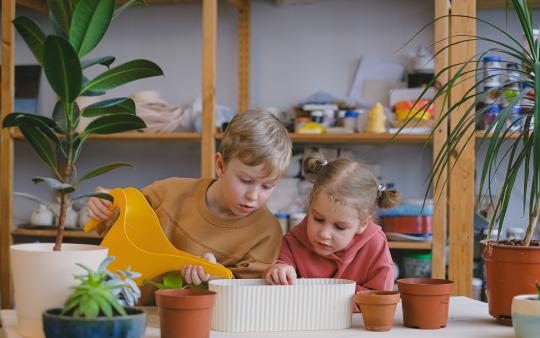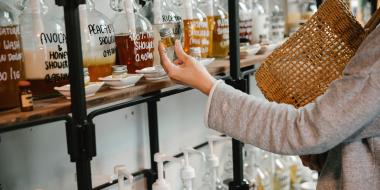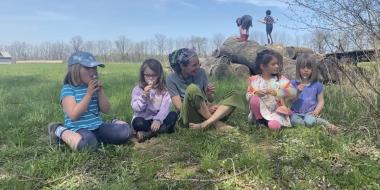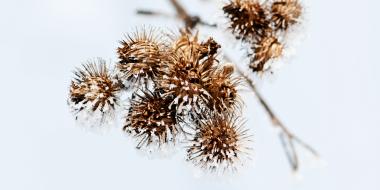People, like seeds, require mindfulness, patience, and resilience. To be healthy you need to practice self-care every day—and plants can teach us how.
One of my favourite experiments in school that I did as a child was growing a lima bean plant to different types of music. I would start by placing a lima bean within a moist paper towel and let it sit in the sun for a week—it would sprout, then be planted into soil to grow further. I was then assigned a type of music, usually rock or classical, and I documented the plant’s growth over a month while the music played. It was fascinating to watch the plant grow; I was mesmerized by every change that occurred.
Most interesting to me was when the class brought their plants in at the end of the experiment to compare their results: except for a few outliers (those plants which didn’t make it), it appeared that classical music was a more stimulating environment for plant growth (although there are way too many variables to conclude this as a scientifically sound study!) Unbeknownst to me at the time, I was being taught a valuable lesson in self-care and the effect of environmental factors on nourishing growth and development; plants are wonderful teaching tools for children.
SEEDS OF INTENT
Each plant starts as a tiny hard speck (a seed) and with the right light, nourishment, and environment it bursts and grows. The seed has an outer hard shell to protect its inner magic and only opens when proper conditions are met. Each seed contains the entire blueprint of the plant—a small yet mighty keeper of infinite plant potential. Sometimes the seed may not grow; maybe it’s either not the right time or not the right conditions, and that’s okay. Sowing seeds is a lesson of patience.
Kids’ Craft
Using different seed types, see if kids can match the seed to the plant using picture cards or drawings. Seeds can be found around the kitchen (e.g., sunflower and sesame seeds) or outside (e.g., pinecones and acorns). Discuss the different ways in which seeds are planted and ask why the seeds have evolved to have certain features—how does it serve or protect them?
MINDFUL GARDENING
Gardening is no chore (as some may think); it’s a meditative act which is done with intent. Each seed is placed with purpose and thoughtfulness. Start your seedlings with a grounding ritual. Hold each seed in your hand, take five deep breaths, and thank the seed for its nourishing and healthy properties. Then make a finger-deep poke into the earth (or a cup of soil) and place the seed in the hole and cover. You can do a similar exercise with kids using cardboard egg cartons. In each separate cell, write a high vibrational word (e.g., love, health, happiness, grace, etc.), fill two-thirds with soil, and repeat the above procedure (holding the seed, thinking of the word, breathing deeply, then putting it in the soil). Leave the seed starters near a sunny spot, water them every two to three days, and watch them begin to sprout.
The garden, or a single plant on a windowsill or in the kitchen, is a great teacher of self-care. You need to pay attention to the plants to see what it needs and respond appropriately. If the plant wilts, it needs more water. If it yellows, it needs more food. Some plants need more sun than others or different types of nutrients. The basics for each plant, just like with people, are water, food, air, and sunlight. If we don’t eat enough food (or the right food), we lack energy. If we don’t drink enough water, we wilt too. If we don’t get sunlight, we don’t stand as tall or shine as bright.
Plants work well in groups and act as a community, just as we do. They interact with their environment (the earth) and the plants around them, creating a cohesive and nurturing ecosystem. Similarly, the communities in which we live are an important environmental factor and are necessary for health. Isolation and loneliness, for instance, can be detrimental to our health.
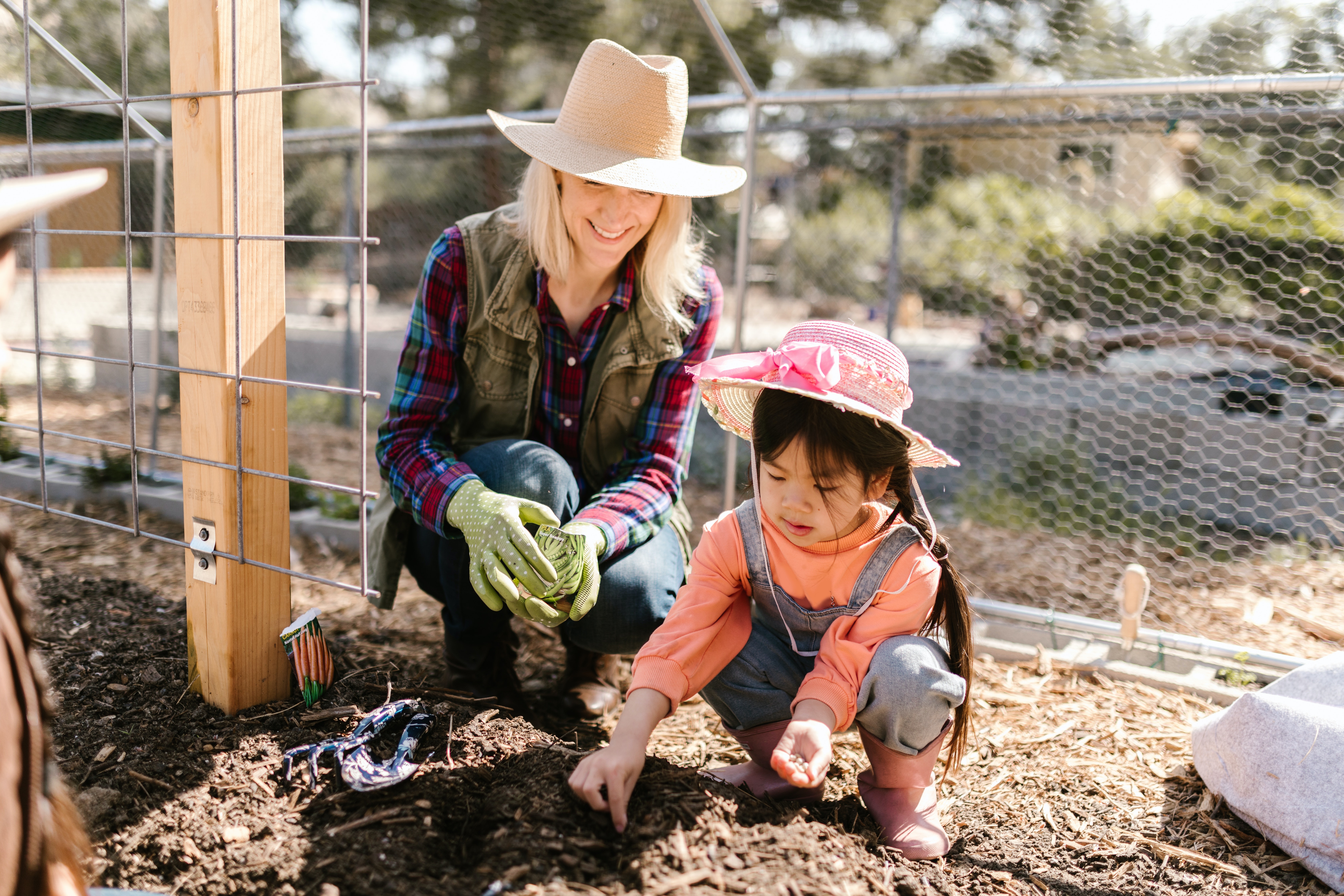
PLANT-LIFE LESSONS
Lastly is the lesson of resilience, which plants also teach us. Plants, once established with good roots due to proper care, demonstrate strength and resiliency to stressors in their environment. They are strategic and place their energy where it is most needed. If it’s in bloom, then the energy goes to the flowers; when it’s dormant or not blooming, the energy goes to the roots or leaves. If the plant grows too much or outgrows its container, it will put energy into the strongest section of the plant and wait until it is transferred into a new container before it grows again—the roots need space. When it comes to our own resiliency and the ability to deal with stress, we are similar to plants. If we practice self-care and develop “good roots,” we’re more adaptable in stressful situations.
Just imagine how you would deal with a difficult situation after a poor night’s sleep and missed meals, compared to having plentiful meals and a good night’s rest. To build our resilience, we need good boundaries. If we outgrow our space or a situation, we need to leave it behind and find a space that’s more suitable to our needs. If we put our energy into every aspect of our lives, constantly working and striving with no periods of rest, then we become frazzled and more prone to being stressed and energy deficient. Placing our energy on only the important tasks improves our resiliency. This is a lesson in prioritizing and planning.
Plants aren’t always growing; there are times (such as the winter season) when they need to pause and reflect inward, protecting and building their energy for periods of growth in the warmer seasons. We, too, need moments of pause and inner reflection to build our stores of energy.
Plants also teach us the lesson of cycles or balance. There are times for growth and times for stillness. Flowers bloom, then they fall. They need to fall for the seeds to be released for next year’s growth. Changes in the environment cause changes in plant growth, yet the plant has the resiliency to survive—and if not, new seedlings will grow and take its place. The ultimate lesson is that we need change to grow, and we need to care for ourselves to be resilient to that change. Plant seeds of self-care and watch them grow.
Build a Terrarium
Items:
- Glass bowl/mason jar
- Small rocks or marbles
- Small plants or seedlings
- Plastic toys or crystals/rocks
Steps:
- Fill about 2–3 inches of the bowl/jar with rocks to allow for water drainage.
- Fill ⅔ of the bowl/jar with soil.
- Place 2–3 plants and a toy or crystal in the container. It’s best to use tropical plants that grow slowly, or a fail-proof option is to plant a cactus (you can then use coloured sand or a kinetic sand layer on top).
- Water when the soil is dry.
You May Also Like: Gardening for Absolute Beginners, Self-Reliance Skills Help Children Navigate Their World, How Crying Impacts Children's Mental Health.



